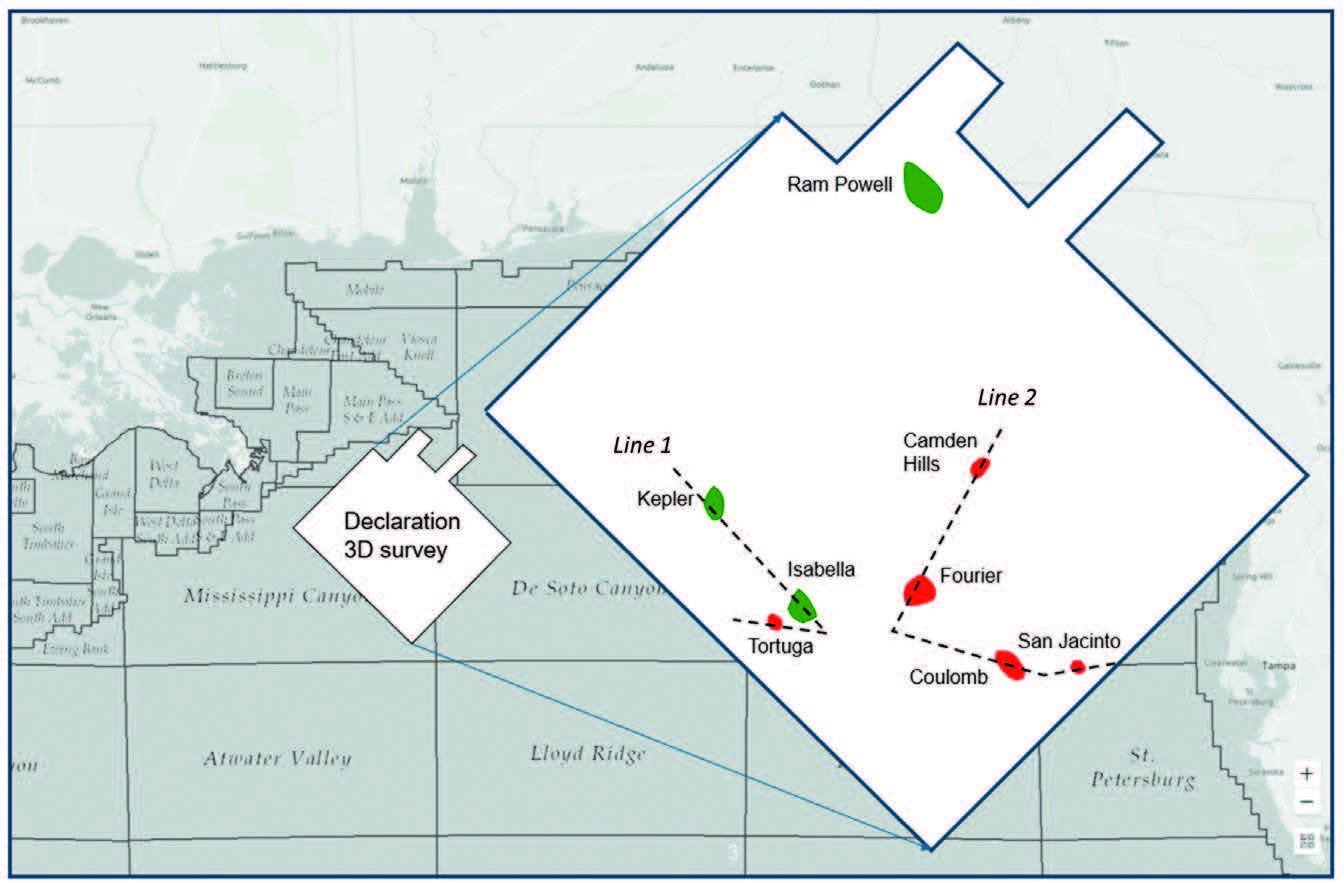First Published: First Break, Vol. 41, September 2023 by David Went, Richard Hedley and Jon Rogers
David Went, Richard Hedley and Jon Rogers demonstrate a highly effective method to identify hydrocarbons without any well data control in the simply buried Neogene and Paleogene (Tertiary) strata of the Mississippi Canyon.
Abstract
The results of a seismic inversion method designed to screen for AVA anomalies in siliciclastic frontier basins is tested in a mature deep-water setting, the Mississippi Canyon, Gulf of Mexico. The method, which is founded on a universal rock property model for siliciclastic sediments, uses widely available partial stacks to invert seismic data for intercept and gradient impedances and generate a relative elastic inversion volume (rEEI), optimised for lithology and fluid detection. The results demonstrate the method is highly effective, but not infallible, at identifying hydrocarbons without any well data control in the simply buried Neogene and Paleogene (Tertiary) strata of the Mississippi Canyon. They further suggest that the use of the method in the early stages of prospecting in simply buried, siliciclastic basins globally, has the potential to identify opportunities that might otherwise be overlooked when interpreting only on the full stack.
Introduction
The search for large oil and gas accumulations increasingly relies on prospecting for stratigraphic rather than structural traps, commonly in deep water, in passive margins (Allan et al 2006). Delimiting sand fairways and high grading closures with oil and gas potential increasingly relies on amplitude variation with angle (AVA) analysis.

Location of the test dataset (Declaration Refocus) in the offshore deepwater Gulf of Mexico (Mississippi Canyon, De Soto Canyon and Vioska Knoll Protraction Areas). The expanded survey image shows the lines of section and the fields mentioned in the text and figures.
In the traditional approach to prospecting, detailed AVA analysis is performed on a few highly ranked prospects identified from integrated G&G studies, commonly in the latter stages of the exploration cycle. A simple but robust method for screening for AVA anomalies in the early stages of exploration, for example in frontier siliciclastic basins which typically lack calibrating wells, is an alternative approach, described and tested in this article.
A seismic inversion method is used that seeks to exploit a globally applicable rock property model, designed to discriminate lithology and fluid using AVA (Went 2021). Although the method is ideally suited to frontier siliciclastic basins, the efficacy of the method is difficult to prove or quantify in such a setting.
The purpose of this paper is to present the results of an experiment conducted to test the model and method in a more mature area: the deep-water, Mississippi Canyon, Gulf of Mexico, where there are numerous discoveries and readily accessible well data.
The results show that the AVA model and seismic method, based on widely available partial stacks, is highly effective at identifying hydrocarbons in the Paleogene and Neogene (Tertiary) strata of this simply buried siliciclastic basin. The adoption of the method in the early stages of prospecting, in suitable frontier basins globally, has the potential to identify opportunities that are otherwise hard to identify when interpreting only on the full stack.

